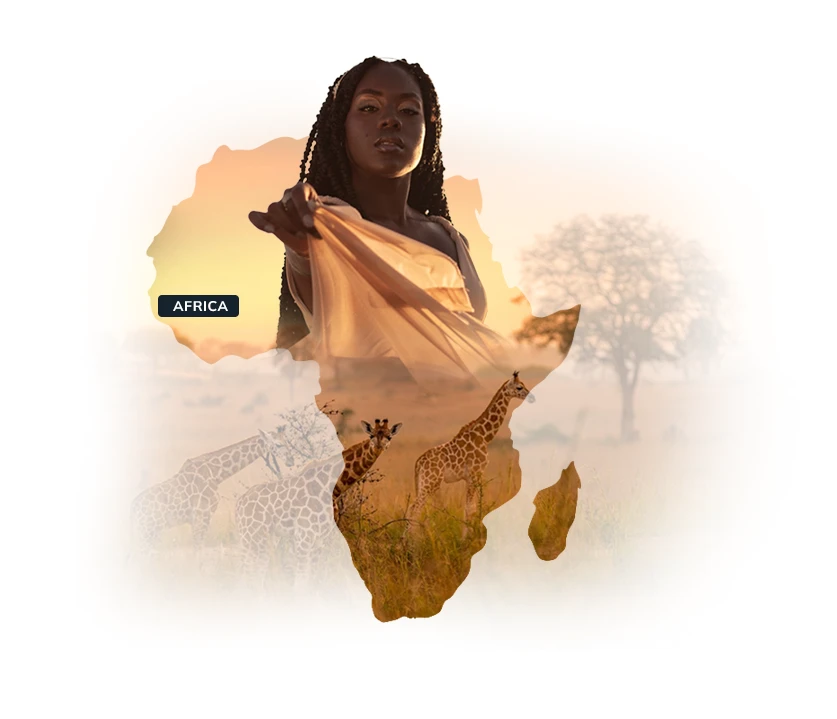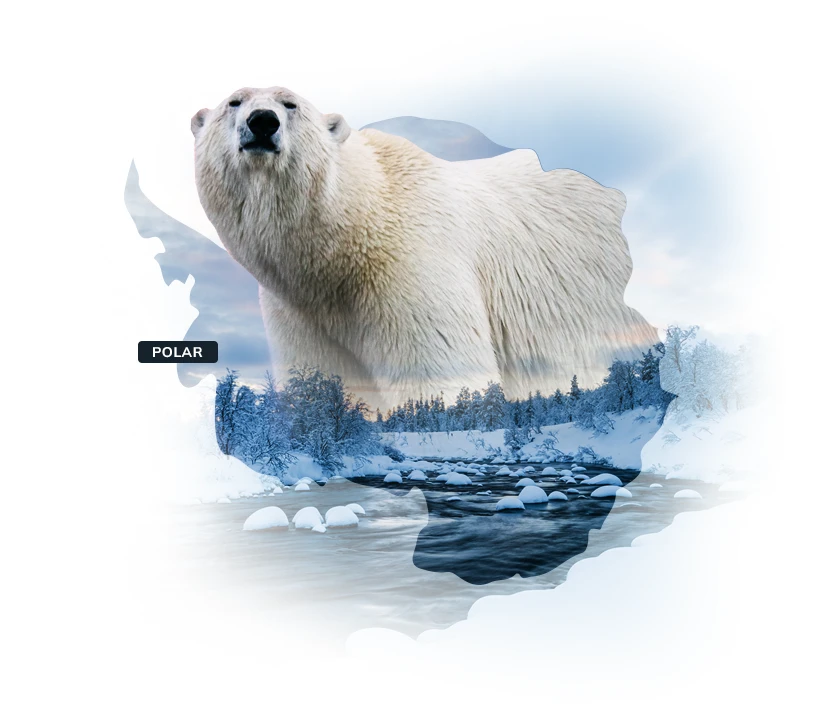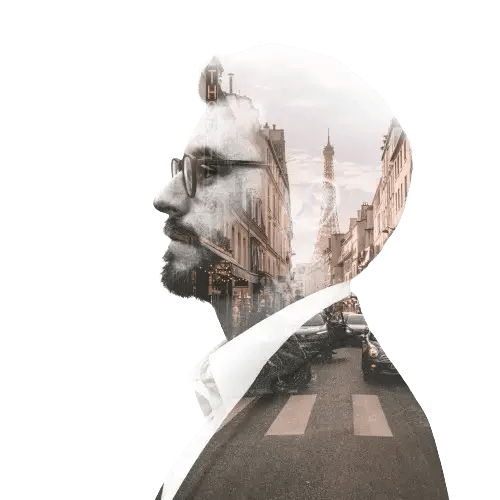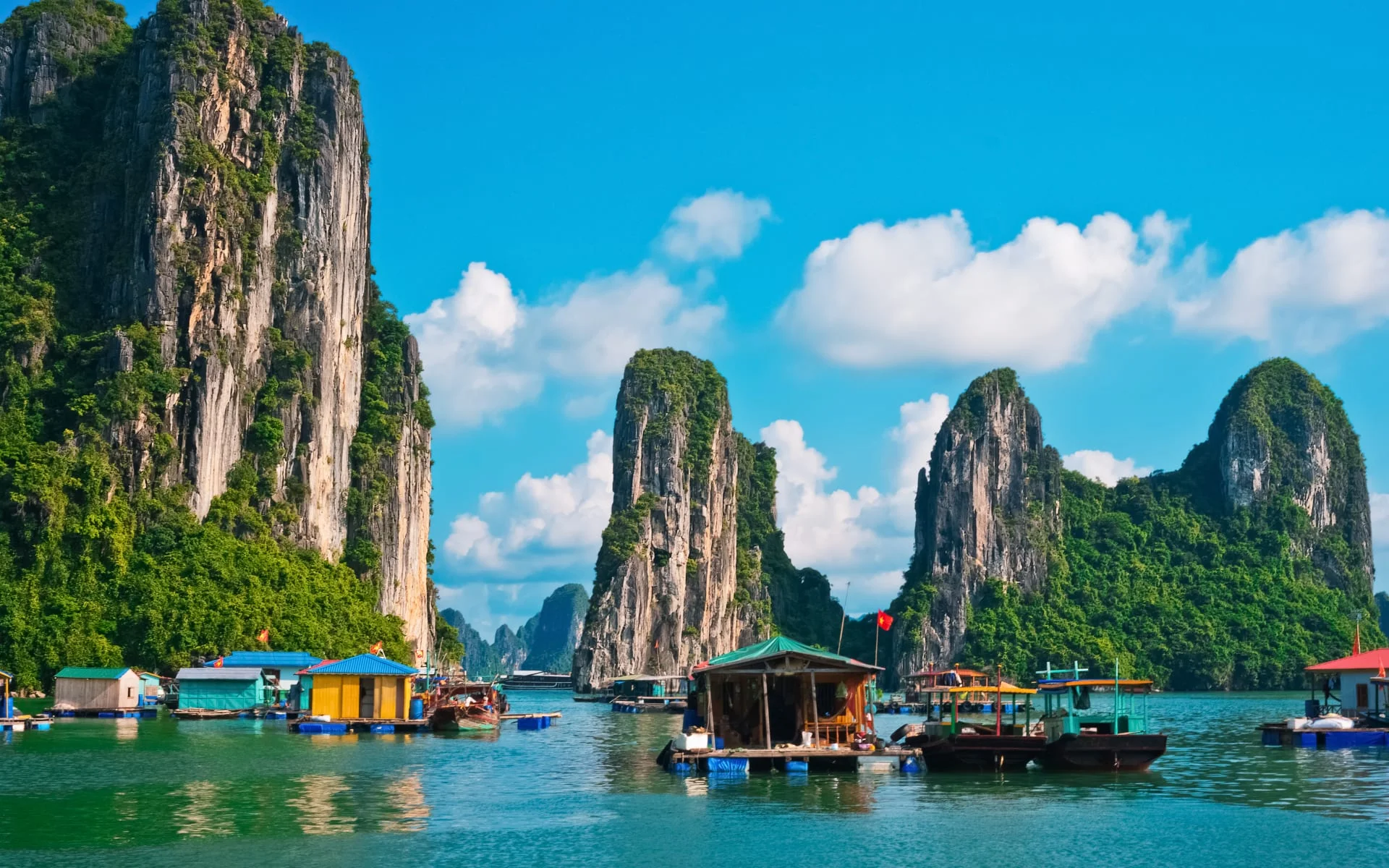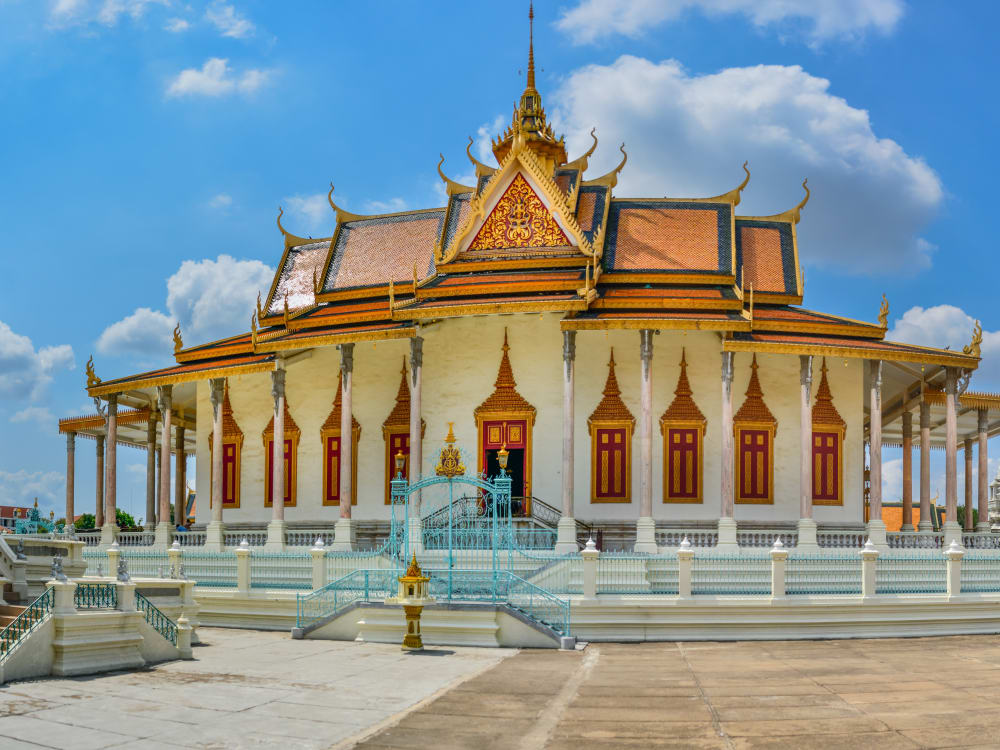When to go to Cambodia
Speak to someone who's been there...
Angkor Wat is at the top of most travellers' to-do lists, and rightly so. To make your visit as special as possible, it's best to try and avoid the crowds during the busy season of December to January and especially during Chinese New Year, which falls in January or February. Personally, I believe that the best time to go to Cambodia is late November.

When's the best time to visit Cambodia?
In general, Cambodia stays warm throughout the year, and the months can be divided into a wet season (May to November) and a dry season (November to May). Both seasons have their benefits, so deciding when to go to Cambodia depends on the kinds of activities you plan to do during your trip:

Cambodia's Wet Season
Cambodia's rainy season starts in mid-May and ends in early November. During this period, you can typically expect short bursts of very heavy rain in the afternoon or longer downpours overnight, so don't worry - you won't experience endless rain every day.
The rain offers a welcome relief from the humidity and high temperatures at this time of year, plus during the day, there’s usually plenty of sunshine in between the showers. The wet season is the best time to visit Tonle Sap Lake, the largest freshwater lake in Southeast Asia, as water levels rise and the Tonle Sap River is forced to reverse its flow.
Despite what you may think, the rainy season can actually be one of the best times to visit Cambodia, as it also has the bonus of fewer tourists.


Cambodia's Dry Season
Cambodia’s dry season starts in mid-November and ends in early May. During these months, you can expect cloudless skies, very little rain, pleasant temperatures and lower humidity.
The dry season is the best time to visit Cambodia if you plan to explore Angkor or relax on the south coast’s beaches and islands . It's also the most popular time to visit Cambodia, so be aware that there may be more crowds at the popular sightseeing spots.
Depending on what you want to do during your time in Cambodia, tourist numbers may be a more important consideration than the weather.
Festivals & Holidays in Cambodia
Cambodia is the country with the most public holidays in the world, totalling 28 days a year. Therefore, there is most likely to be a celebration or two during your trip to look out for. Here are just a few of the most significant festivals and holidays:
Chaul Chnam (Khmer New Year) celebrates the end of the dry season and the start of the rain. It takes place from the 14th to the 16th of April, and like many places in Southeast Asia, this is a really fun time to visit because locals take to the streets for a giant water fight! Warning: you will not be able to escape getting soaked.
Pchum Ben (Ancestor Celebration) is a two-week event that takes place from the end of September through into October. You may see Cambodians dressing in white and offering food to monks at local pagodas, which are intended to be passed to their ancestors.
Bon Om Touk (Water Festival) marks the changing of the currents of the Tonle Sap River in November. Colourful boat races take place all over the country, and some of the best can be seen in the capital of Phnom Penh.
Month-by-month guide to travelling in Cambodia
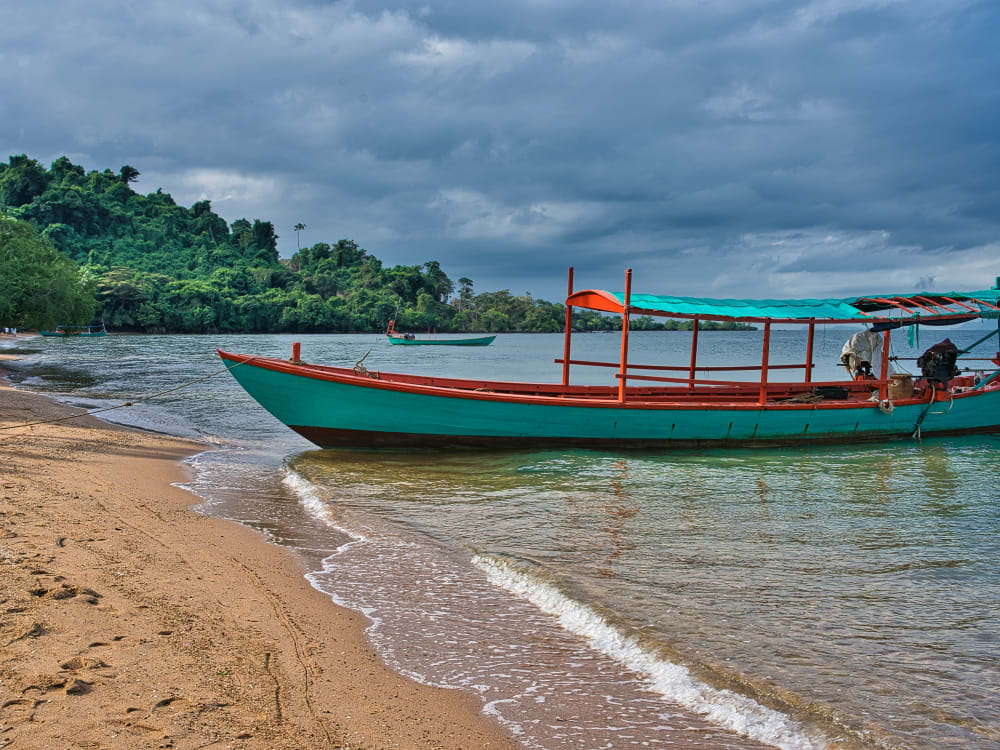
Cambodia weather in January
January is a lovely time to visit Cambodia, as you’ll have clear blue skies, little or no rain, and average temperatures of 26 degrees Celsius. This is one of the most popular months to travel to Cambodia, and the pleasant temperatures make it easier to explore sites such as the magnificent Angkor temple complex.
It’s a perfect month to visit the south coast beach destinations, such as Sihanoukville or Kep, as the chance of rain is extremely unlikely. Dry conditions and warm sea temperatures in January are ideal for diving and snorkelling, and you’ll find an abundance of marine life in the tropical waters around the islands of Koh Rong and Koh Rong Samloem at this time of year.
There are celebrations for National Day on 7th January, as well as Chinese New Year, due to the large Chinese population in the country, which falls in January or February according to the lunar calendar.
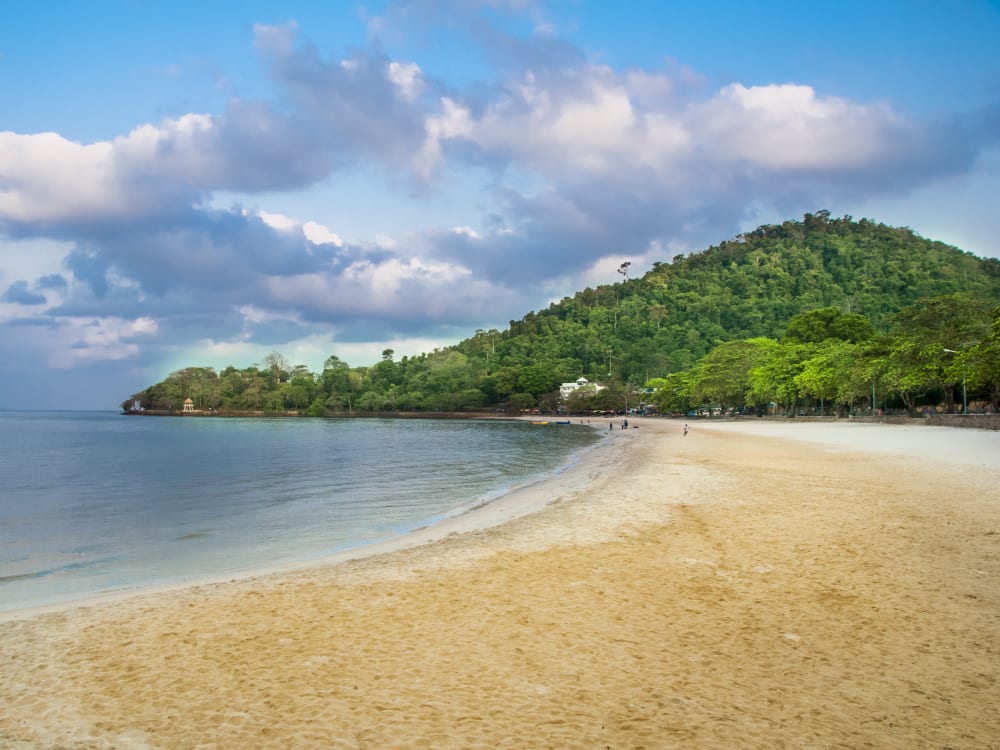
Cambodia weather in February
You can expect excellent weather throughout Cambodia in February. With very little rain and average temperatures around 27 degrees Celsius, it’s a great time to explore the historical city of Siem Reap and the ancient temples of Angkor.
Sihanoukville, Kep and Koh Rong have plenty of sunshine with little chance of rain, plus February offers excellent conditions for diving and snorkelling due to warm sea temperatures and good visibility.
For bird enthusiasts, this is one of the best times of year to see Cambodia's incredible bird life, particularly at Kulen Promtep and Beng Per Wildlife Sanctuaries in the northern plains of Cambodia, and at Prek Toal Wetlands on the western edge of Tonle Sap Lake. Bird life at Tonle Sap Lake is fantastic at this of the year, and you’re likely to spot cormorants, storks and pelicans.
You may also encounter celebrations for Chinese New Year due to the large Chinese population in the country, which falls in January or February according to the lunar calendar.
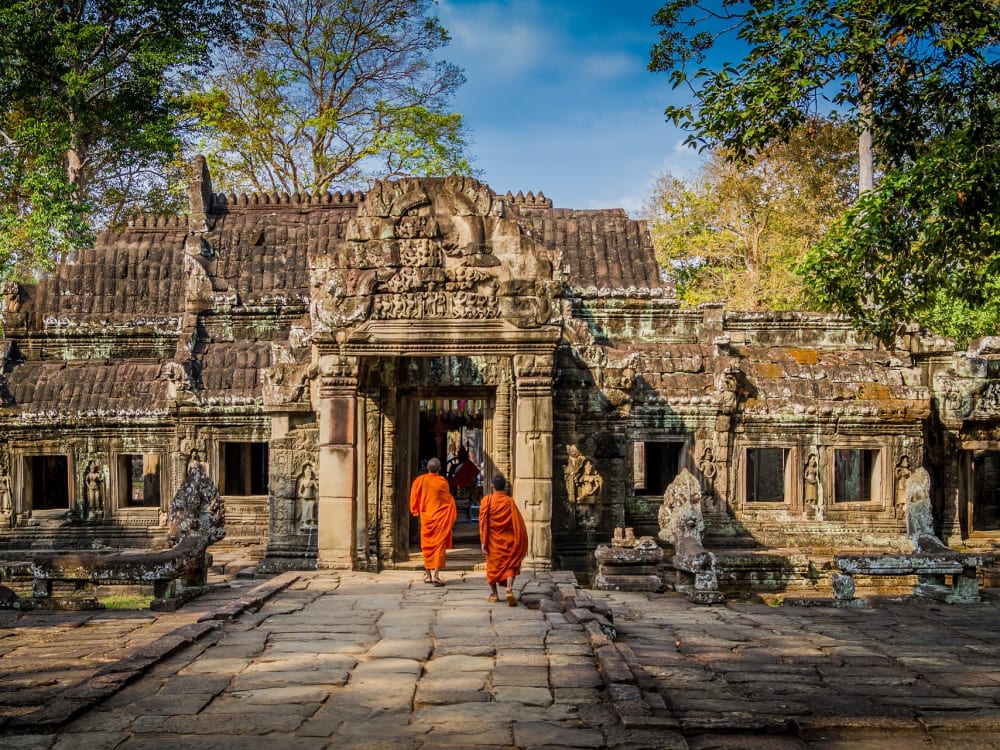
Cambodia weather in March
March is one of the peak times to visit Cambodia, so if you’re planning to travel during this month, we encourage you to book in advance to ensure that you get availability at your preferred hotels.
The temperatures are likely to rise to 30 degrees Celsius, and humidity can be very high. Exploring the Angkor temple complex in the heat and humidity can be hard work; therefore, we recommend early starts and long lunch breaks back at your hotel in the middle of the day.
Cambodia celebrates International Women's Day on 8th March, which is a public holiday in the country.
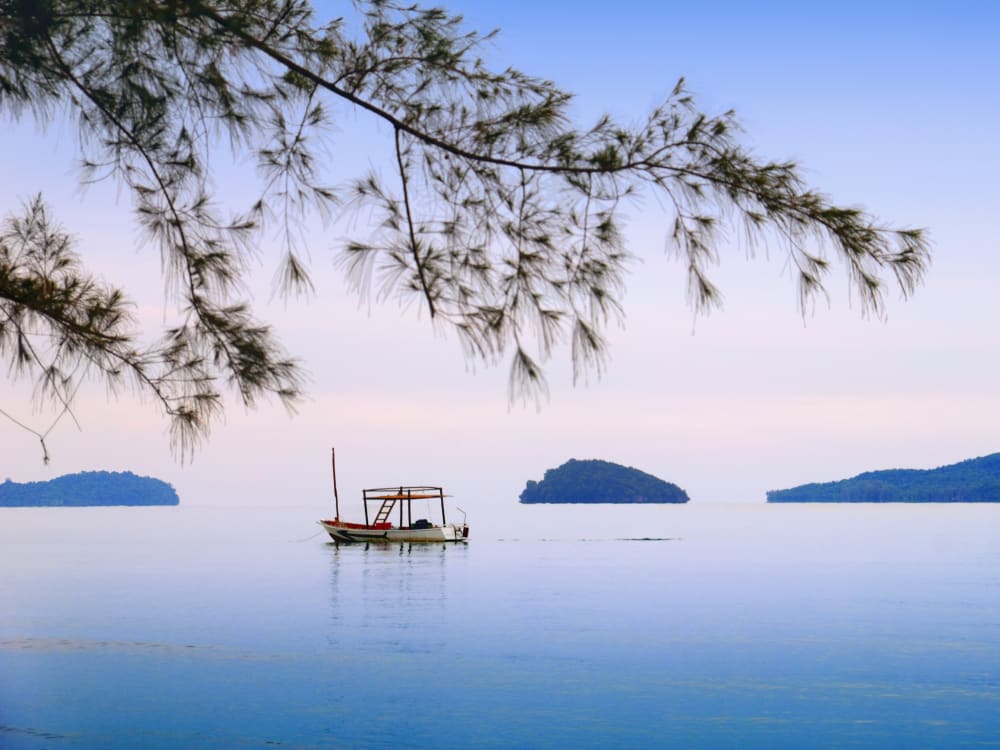
Cambodia weather in April
April is one of the hottest months of the year in Cambodia, with average temperatures of 35 degrees Celsius. The chances of rain are still relatively low, although you should expect the occasional downpour towards the end of the month as the rainy season approaches.
Exploring the Angkor temples can be tough in these hot temperatures, so we suggest that you visit early in the morning or late in the afternoon rather than embarking on a full-day excursion. The heat does have its advantages, though, as there are usually fewer people visiting the main temple sites.
The hot and sunny weather makes April an ideal time of year to visit the south coast beaches of Sihanoukville and Kep, or the islands of Koh Rong and Kong Rong Samloem.
The festival of Bon Chol Chhnam Thmei (Khmer New Year) takes place over a three-day celebration in mid-April. Traditionally, Cambodians considered themselves a year older every Khmer New Year, rather than using their individual birth dates.
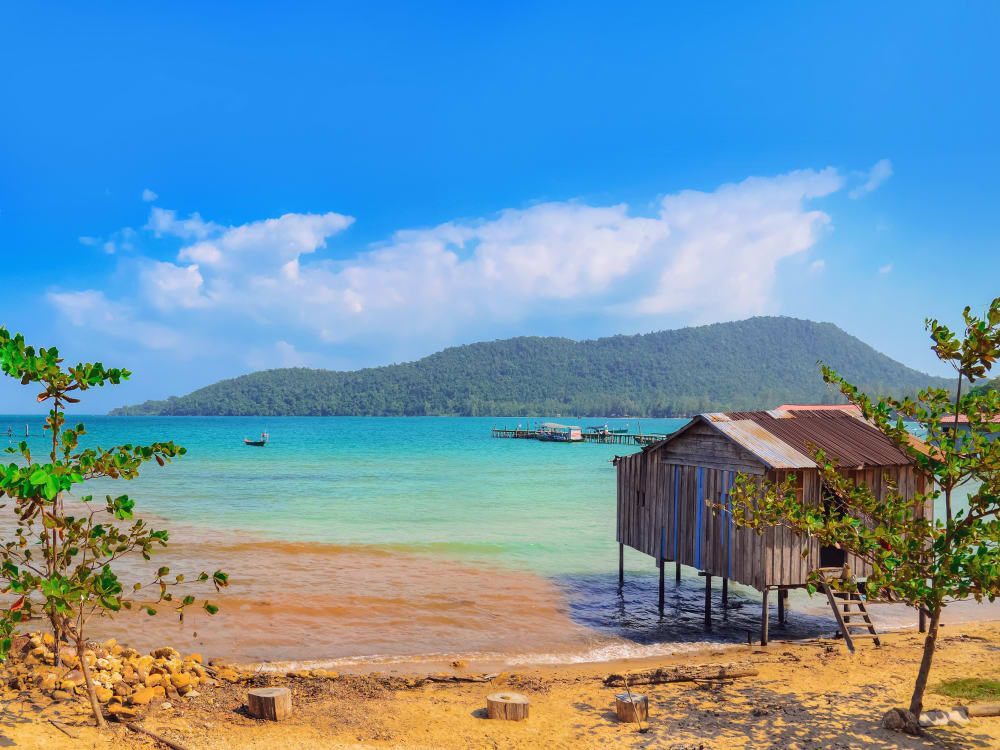
Cambodia weather in May
Early May is usually dry, as the wet season is not yet in full swing. The short, heavy showers won’t necessarily affect your trip and will help to break up the humidity, which makes for more comfortable conditions for sightseeing. You can expect daytime temperatures around 30 degrees Celsius.
If you can avoid the rain as much as possible, May can be a great month to visit Cambodia, plus there’s the added bonus that the Angkor temples are less crowded.
Bon Chroat Preah Nongkoal (the Royal Ploughing Ceremony) takes place in May to mark the start of the rice-growing season. During this time, sacred oxen plough a ceremonial row, producing plates of food which represent the crops in Cambodia. Based on which the oxen consume, the royal soothsayer makes predictions for the agricultural year ahead.
Other public holidays and dates of note in May include International Worker's Day (1st May), Genocide Day (9th May) and Vesak Bucha Day (late May), the latter of which is the anniversary of the birth, enlightenment and death of Buddha.
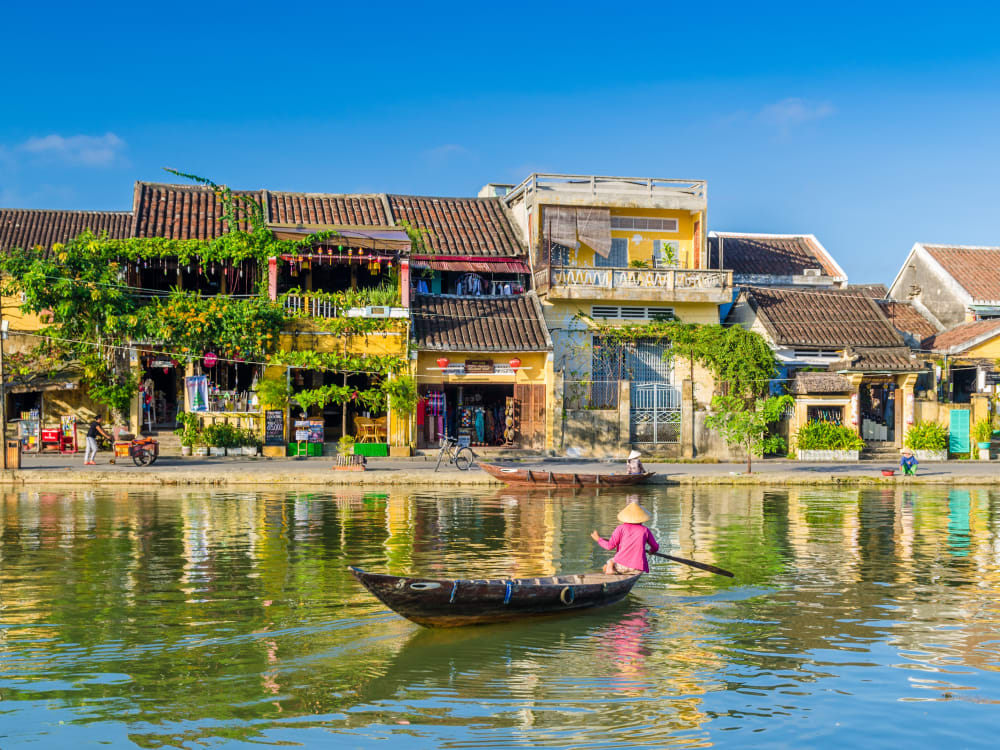
Cambodia weather in June
Rain occurs throughout Cambodia in June; however, it is still considered a good month to visit, and you can expect plenty of sunshine in between the showers. Temperatures are around 28 degrees Celsius, and humidity can be very high. However, the short, heavy showers can help to break the heat and humidity to make sightseeing a little more bearable.
Cambodia's south coast experiences the heaviest downpours, so it’s not a good time to visit the beaches. If you're looking to add beach time to your itinerary, the beaches of central Vietnam, such as Hoi An and Nha Trang, are perfect in June and can be easily added onto a Cambodia tailor-made holiday.
.jpg)
Cambodia weather in July
The wet season continues throughout July. However, you can expect plenty of sunshine in between the short, heavy downpours. Daytime temperatures average between 25 and 27 degrees Celsius.
There are advantages to visiting Cambodia during the wet season: the countryside is less dusty, and the landscape is more lush, plus you’ll find that there are far fewer tourists than during the dry season.
The rainfall makes July a great time of year to see the lakes and moats at the ancient temple city of Angkor, and it is an ideal time to visit the flooded forests and floating villages of Tonle Sap Lake, which swells to more than five times its usual size during the wet season.
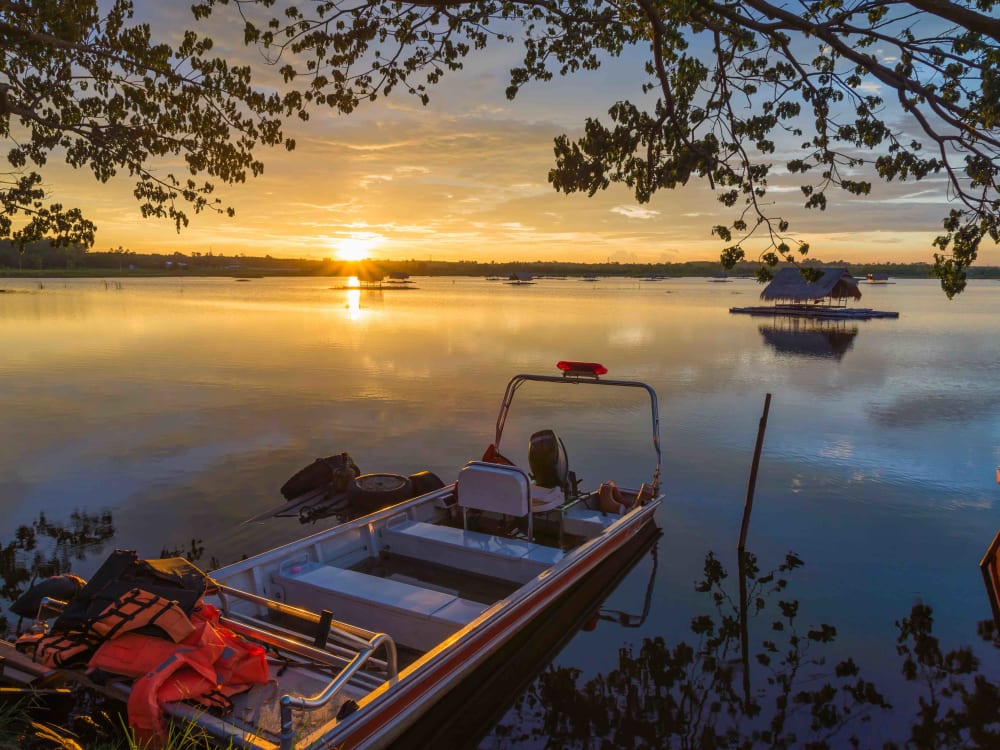
Cambodia weather in August
If you visit Cambodia in August, you should be prepared to get wet. It is likely that you’ll experience intense downpours almost every day; however, when it rains, it’s usually just for a few hours rather than all day. You can expect average daytime temperatures between 25 and 27 degrees Celsius.
The rain at this time of year means that the Cambodian countryside is lush, green and rather beautiful. August is a fantastic time of year to visit Tonle Sap Lake, Southeast Asia’s largest freshwater lake. The water levels of the lake change considerably during the year, ranging from one metre at the height of the dry season to eight metres towards the end of the rainy season. During the rainy season, the force of the Mekong River is strong enough to reverse the flow of the Tonle Sap River, allowing water to flow back into Tonle Sap Lake.
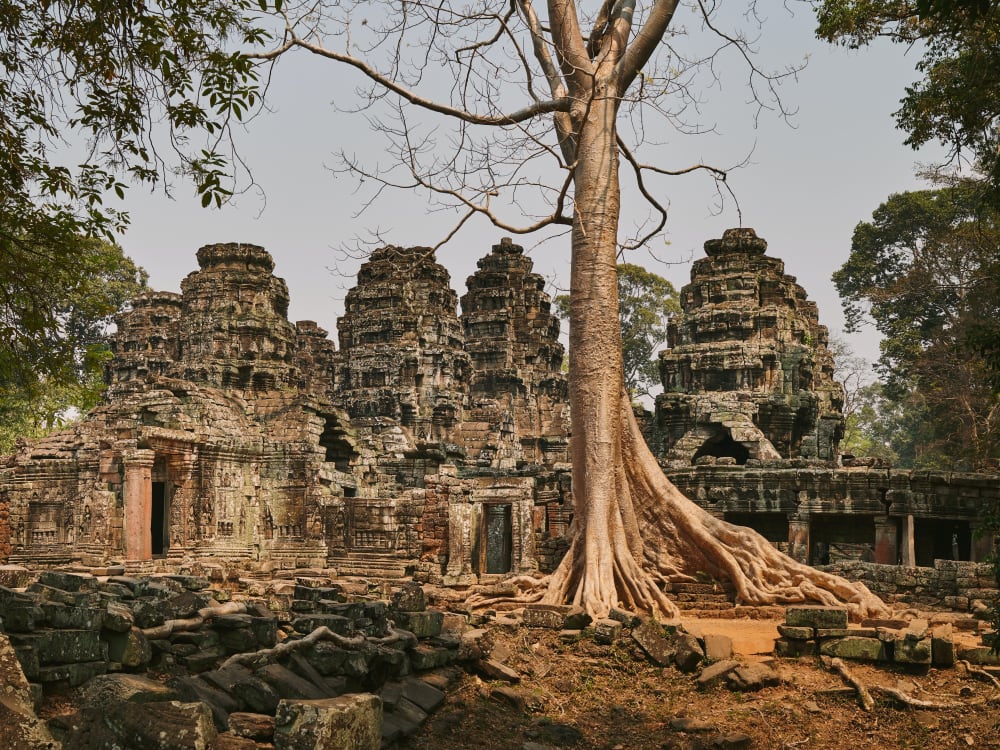
September weather in Cambodia
September is wet and warm, with high levels of rainfall and average temperatures of 26 degrees Celsius. The rain means that the moats and pools surrounding Angkor are full, which makes for great photo opportunities of temple reflections. If you’re visiting Cambodia at this time of year, you’ll find that there are much fewer tourists at the Angkor temple complex. At some of the lesser-known temples, you may even have the entire place to yourself.
September is another great month to visit Tonle Sap Lake, as it swells to more than five times its size during the wet season.
Pchum Ben (Ancestor’s Day) takes place from the end of September to mid-October. During the 15-day festival period, it is believed that the spirits of dead ancestors are especially active and may even return to Earth. You'll see many Cambodians wearing white, offering food to ancestors, with lots of activity in pagodas and temples.
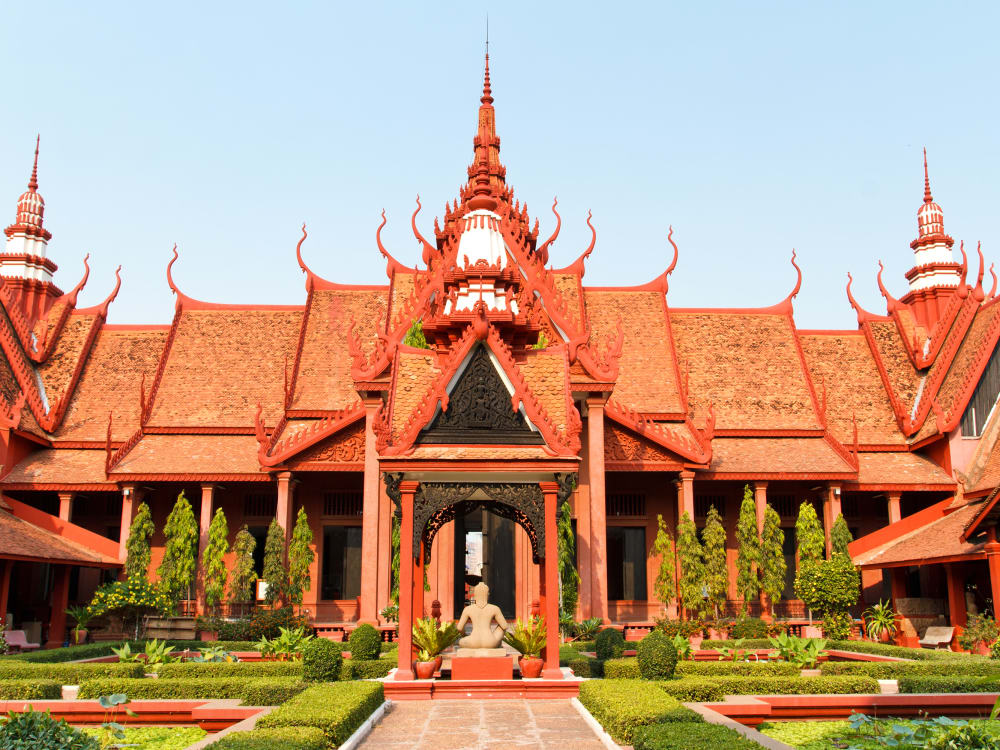
Cambodia weather in October
Although you should expect a few rainy days in October, you’ll find that the rain gradually comes to an end as the month progresses. The daytime temperatures tend to be around 27 degrees Celsius.
Following months of rain, October is a great time to visit Tonle Sap Lake. If you get off the beaten track and explore the remote northeast regions of Ratanakiri and Mondulkiri, you’ll see full-flowing waterfalls.
Rain is still a possibility on the south coast, in Sihanoukville and Kep, though the showers will become less frequent and long periods of sunshine can be expected as the dry season approaches.
Pchum Ben (Ancestor’s Day) continues into mid-October. During this period, Cambodians believe that the spirits of dead ancestors are active and may return to Earth. Therefore, you may see local people wearing white, offering food and praying at pagodas and temples.
Celebrations for the king's birthday on 31st October take place towards the end of the month and into early November, with many Cambodians taking the opportunity to visit Phnom Penh for the occasion, as a form of pilgrimage.
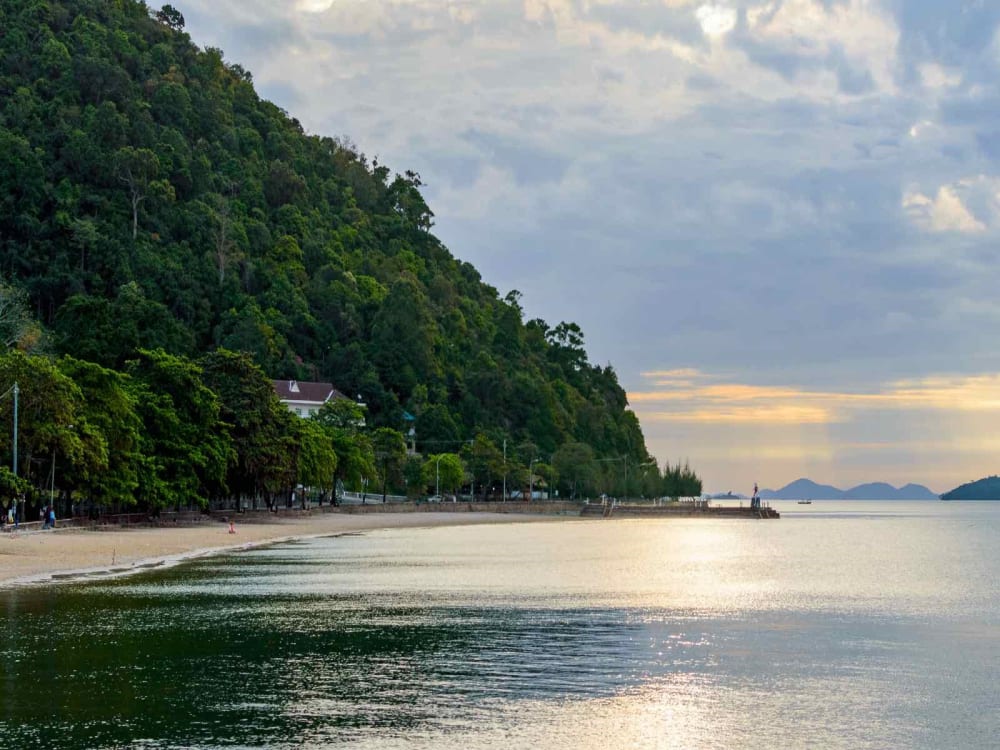
Cambodia weather in November
Cambodia is at its best in November. After the rainy season, the countryside is lush and green, temperatures are pleasant, and rivers and waterfalls are at their most impressive.
With comfortable temperatures (around 25 degrees Celsius), low humidity and plenty of sunshine, this is a popular month to visit Cambodia. The temperate climate makes exploring the Angkor temples more manageable, although we recommend that you find some shade during the hottest part of the day. Although November is the start of the dry season, you may experience the occasional short shower early in the month. Therefore, it is advisable to take a rain jacket and umbrella when you’re out on sightseeing trips.
With warm, sunny days and calm seas, November is a perfect time to discover the beaches of Sihanoukville, or explore Ream National Park on the south coast of Cambodia.
Every November, the water in the Tonle Sap River changes course due to the change between the wet and dry seasons, plus the forces of the Mekong. This natural phenomenon is celebrated with Bon Om Touk (Water Festival), with boat races taking place across the country, most notably in Siem Reap and Phnom Penh.
Cambodia also celebrates Independence Day on 9th November, and the annual Angkor Festival of performing arts usually takes place in later November or early December.
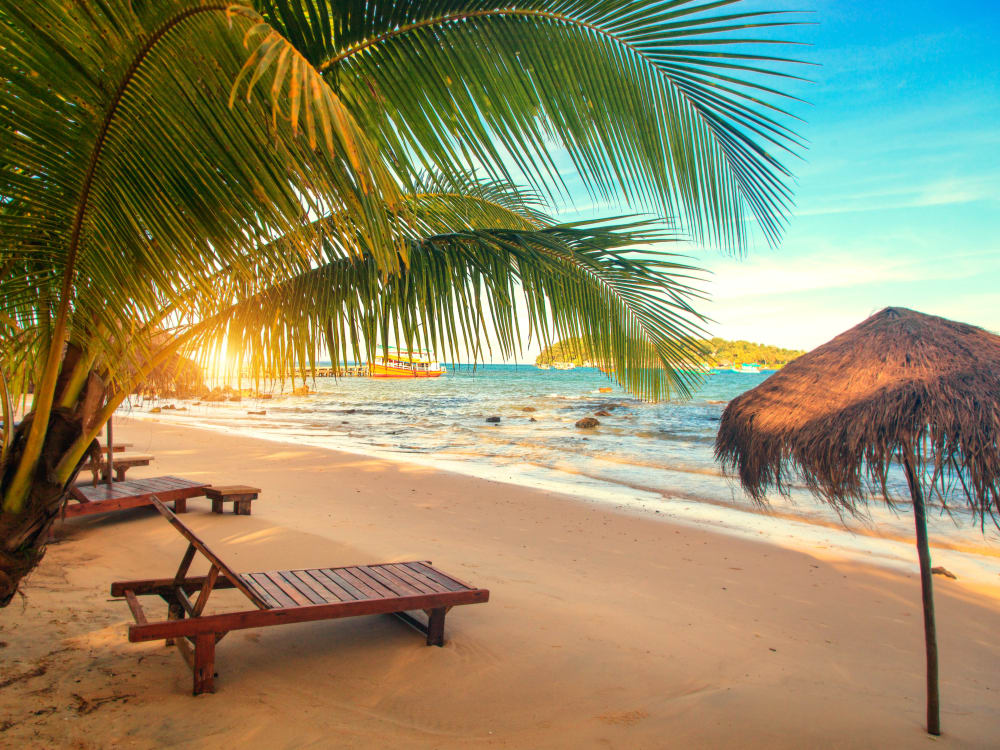
Cambodia weather in December
With its dry, sunny weather, low humidity and average temperatures of 26 degrees Celsius, December is one of the most popular months to travel to Cambodia. The comfortable temperatures and minimal chance of rain make temple sightseeing more manageable. Tonle Sap water levels are still fairly high, so visits to the floating villages by boat are still possible at this time.
The south coast beaches are ideal during December, and the islands of Koh Rong and Koh Rong Samloem have excellent diving conditions at this time of year as well.
The Angkor Festival of performing arts usually takes place in late November or early December, with the International Half Marathon around Angkor also attracting thousands of participants and spectators in late December.
Featured Cambodia
Our trip ideas are presented as a guide for inspiration. Tell us about your interests and how you like to travel, and our Luxury Travel Specialists will craft your ideal luxury tailor made holiday.
A world of travel inspiration
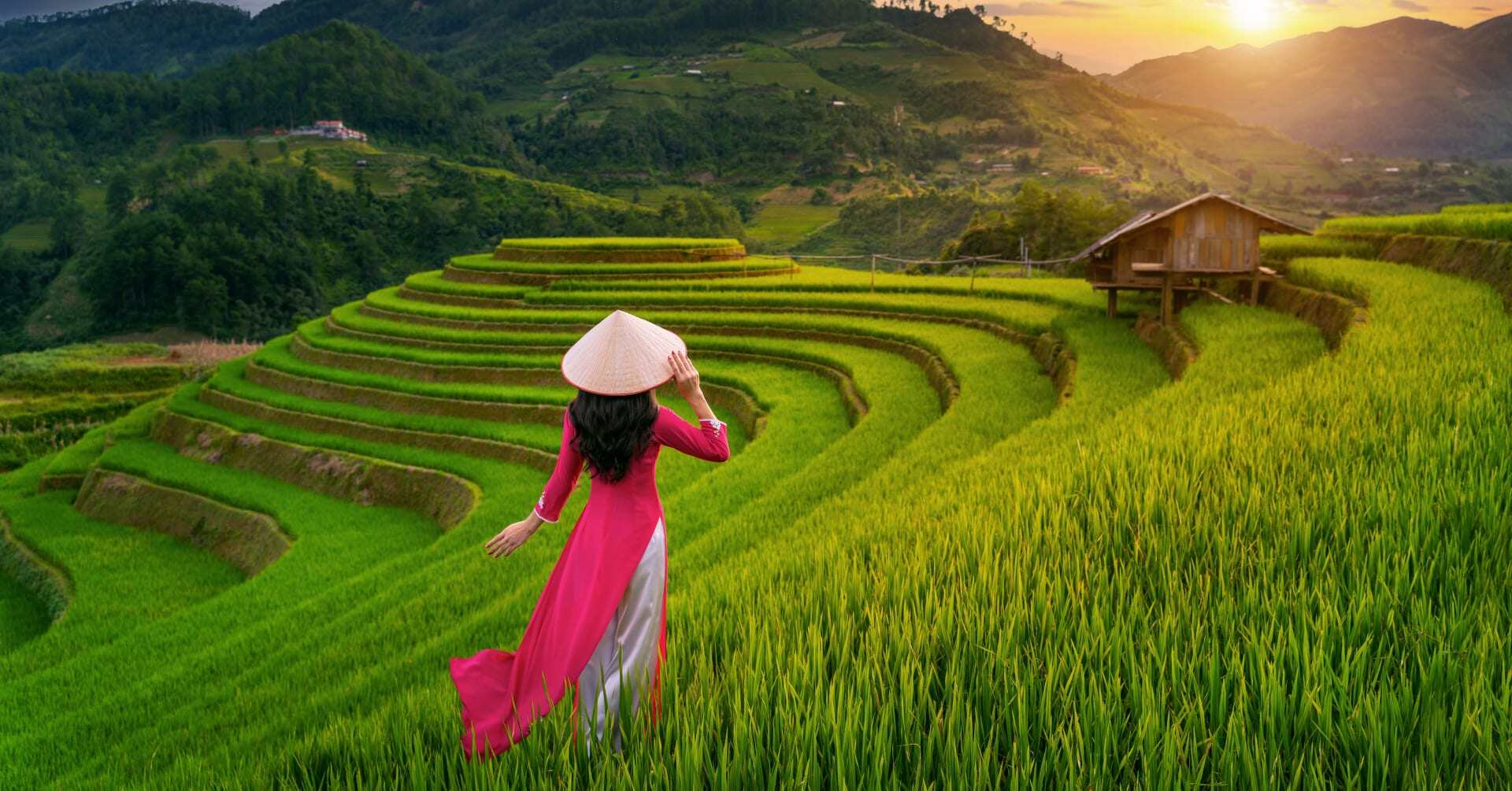
15 Most Beautiful Places To Visit in Vietnam
June 05, 2025
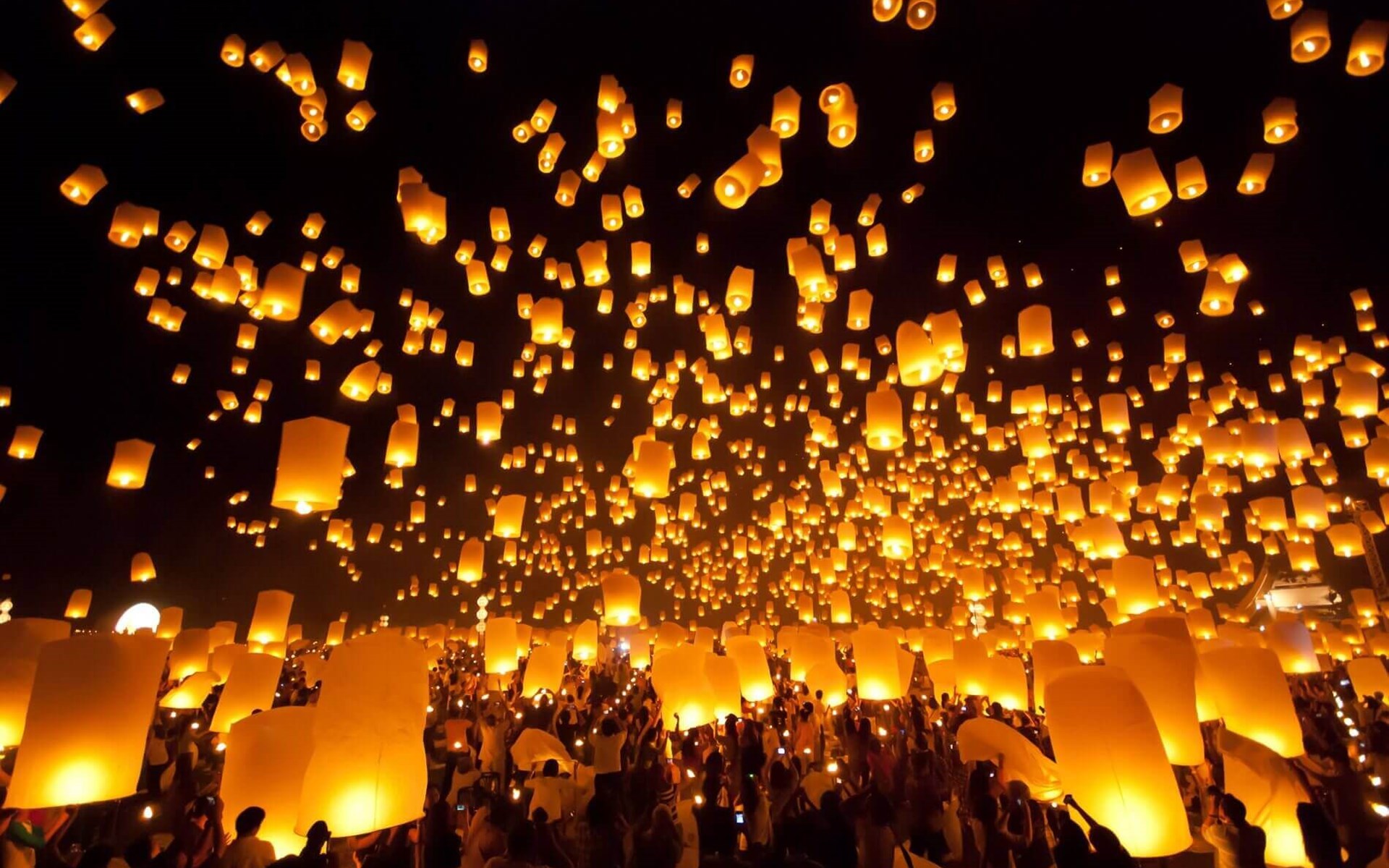
15 Magical Thailand Festivals
April 14, 2023
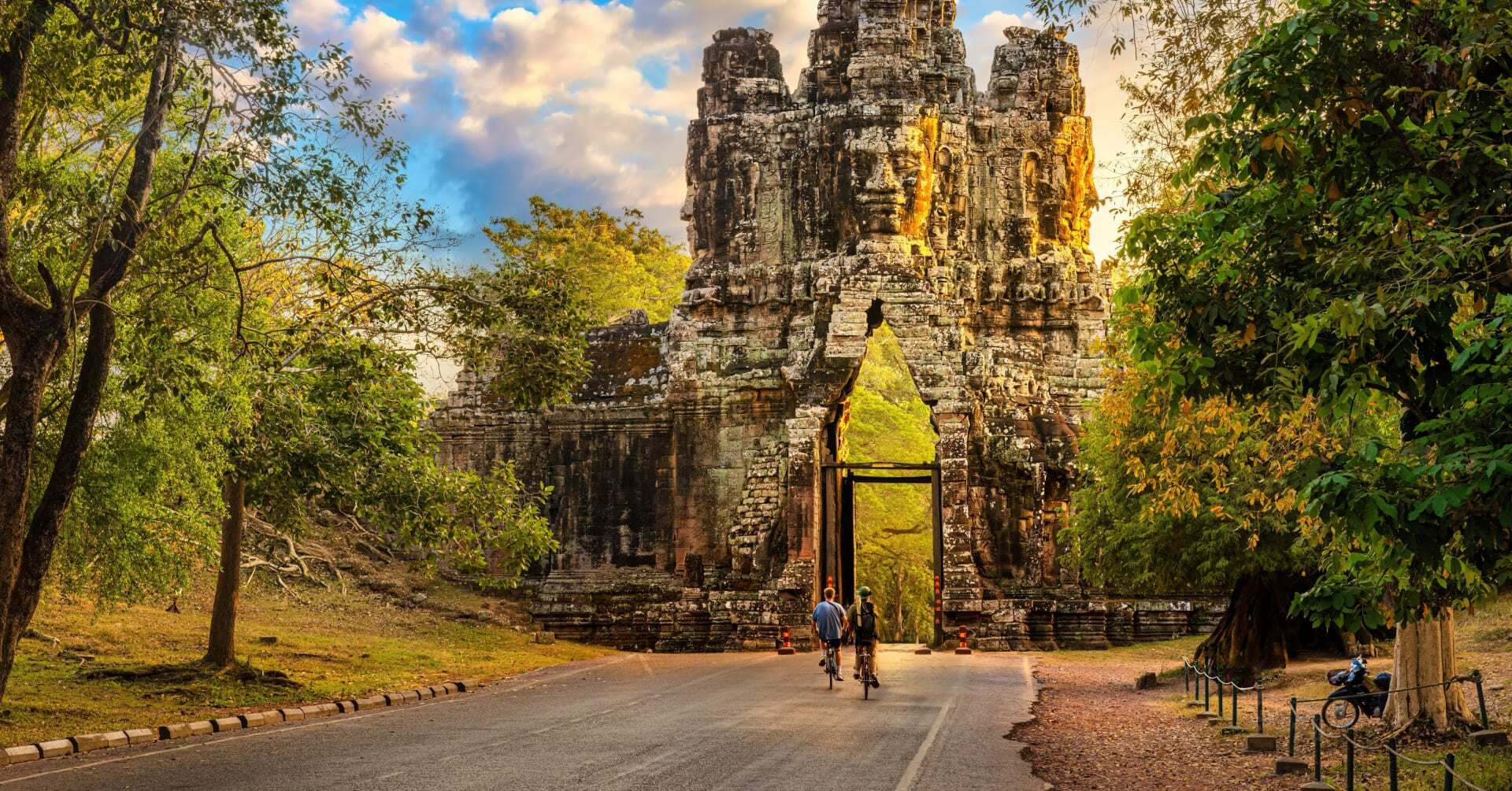
Guide to Angkor Wat Temples (Including Where to Stay)
April 22, 2025
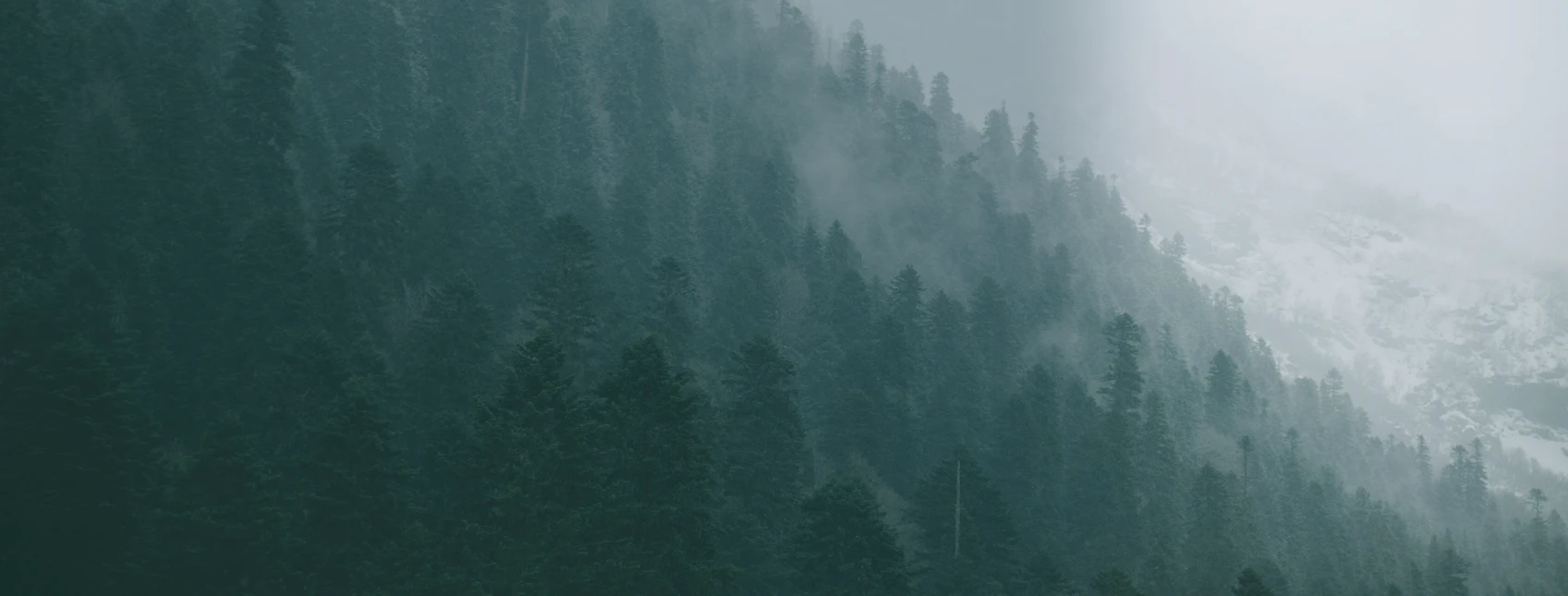
Sign up to our newsletter
For more travel inspiration delivered straight to your inbox just fill in your details here


